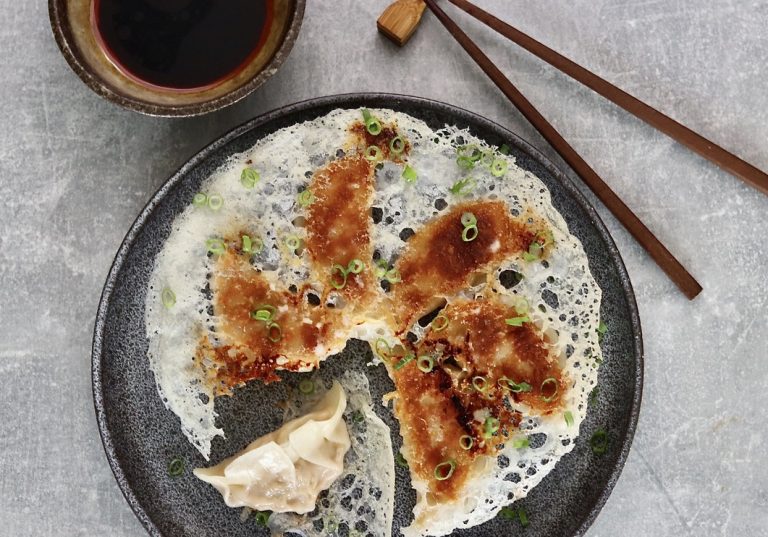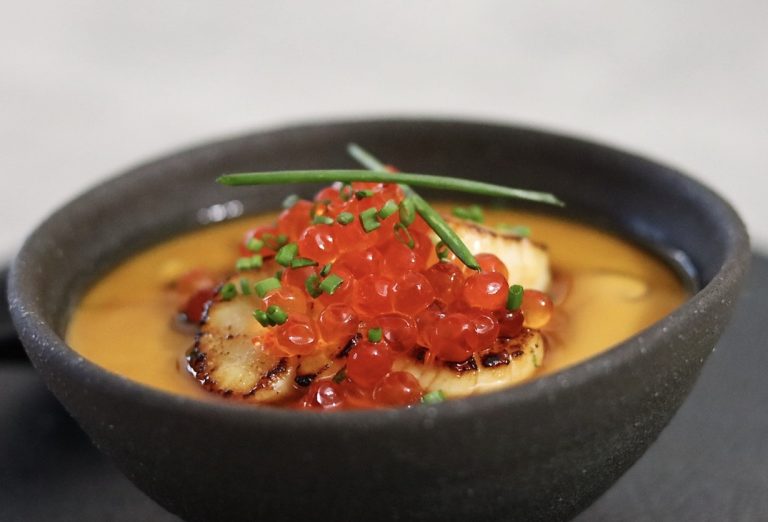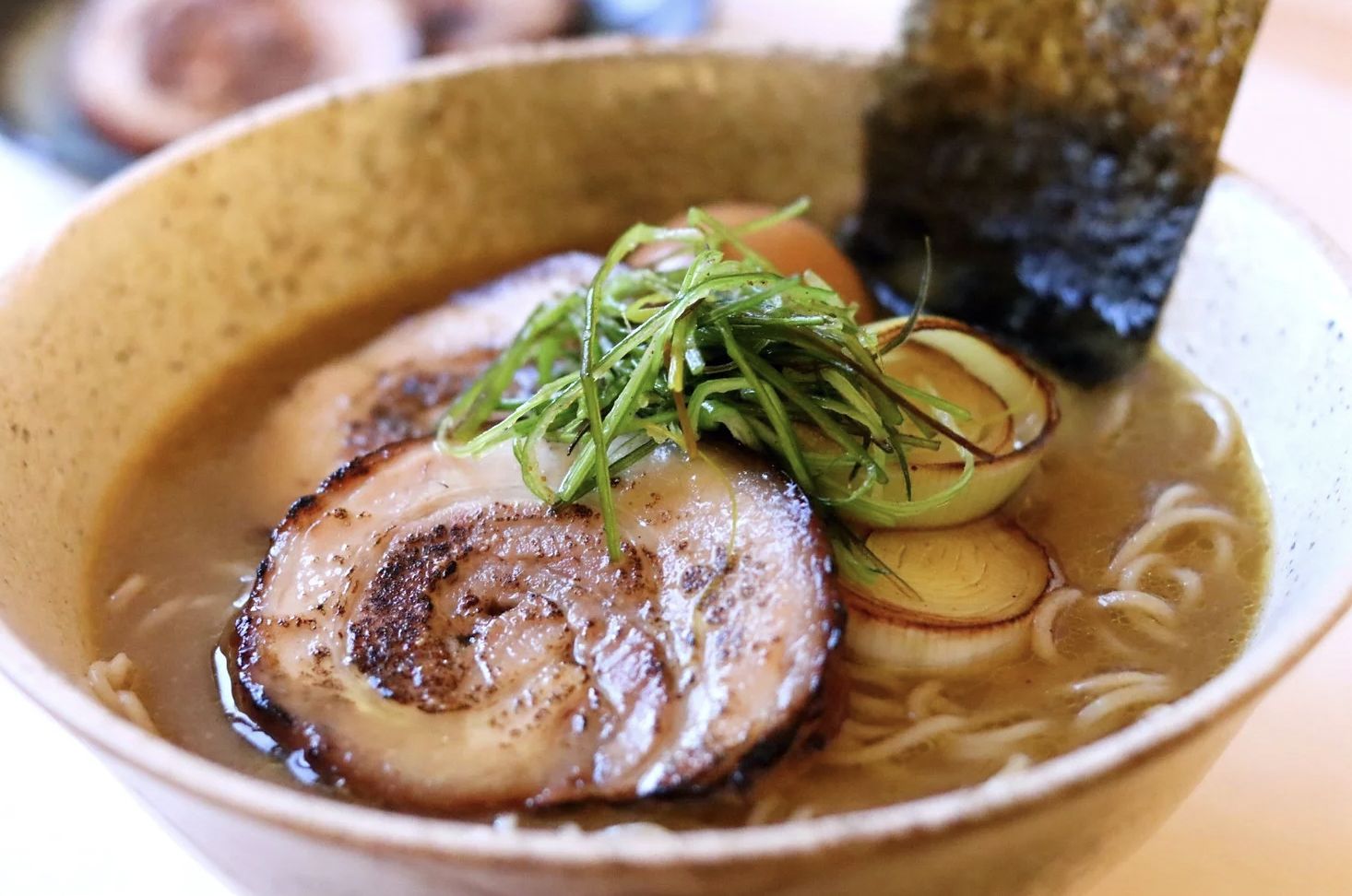
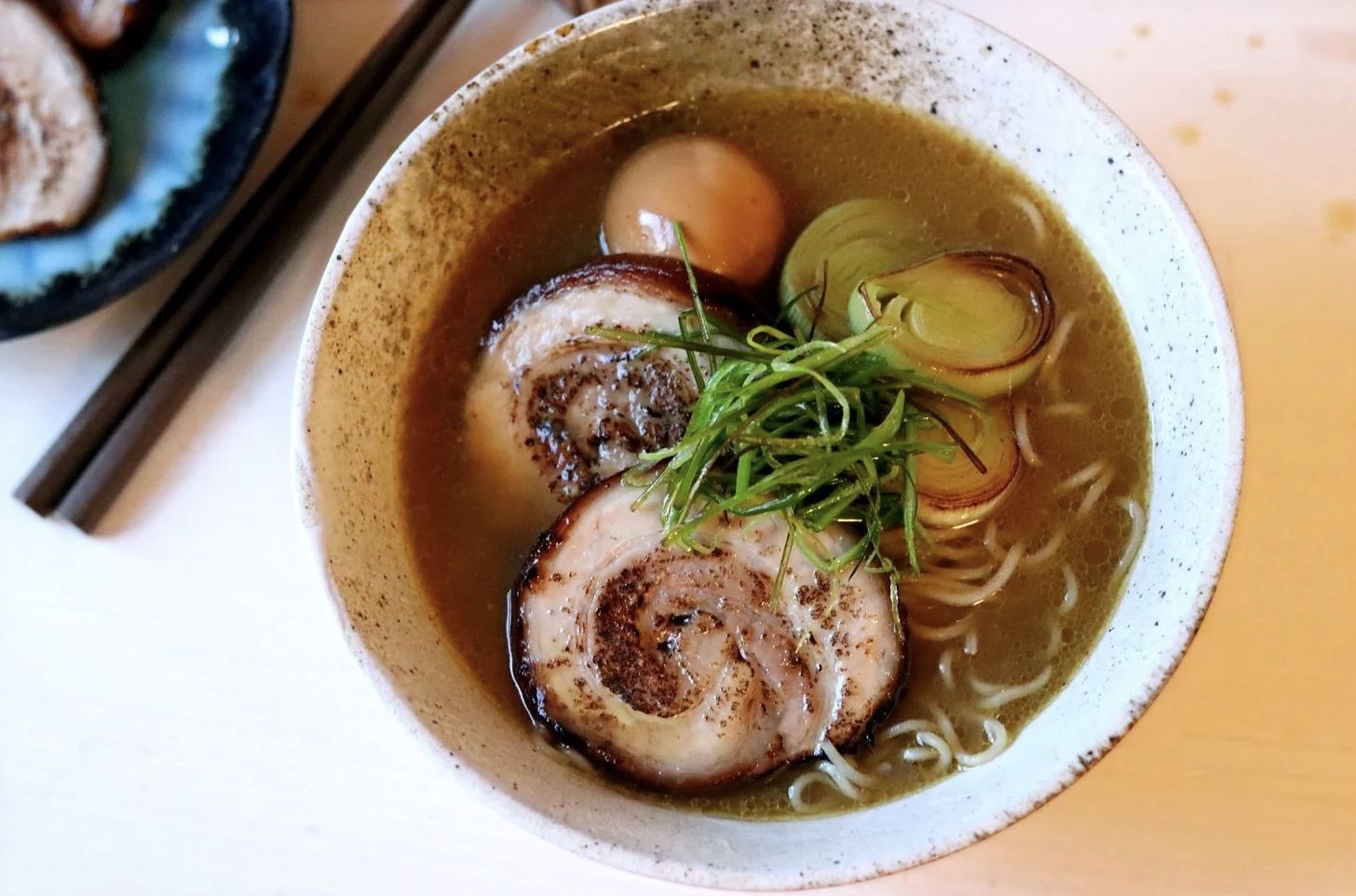
Intro:
Method:
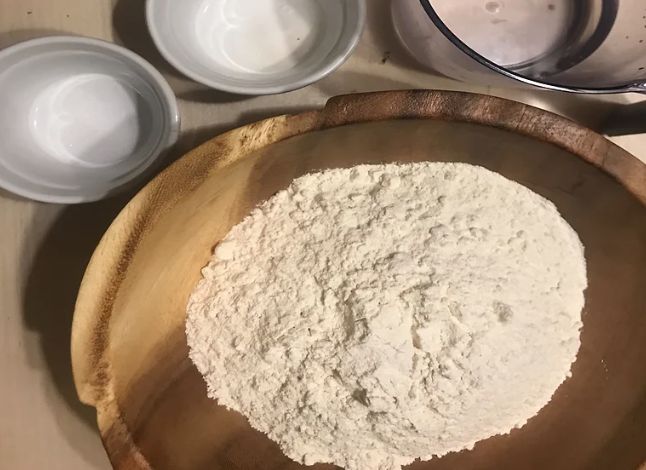
1. Let’s start by making the noodles for the ramen, these are a 40% hydration noodle that is quite high but I find this hydration works well with a pasta machine. Start with the kansui, bake a tbsp of bicarbonate of soda in a oven set at 110°c for 45 minutes. When finished this bicarbonate of soda becomes sodium carbonate which will help our noodles have a far better snap to them. Take care when handling the sodium carbonate. When ready weigh out 5g of now sodium carbonate and add to 200ml of cold water and 5g of salt. Mix the liquid well then slowly add to 500g of bread flour stirring continuously with chopsticks to hydrate all of the flour.
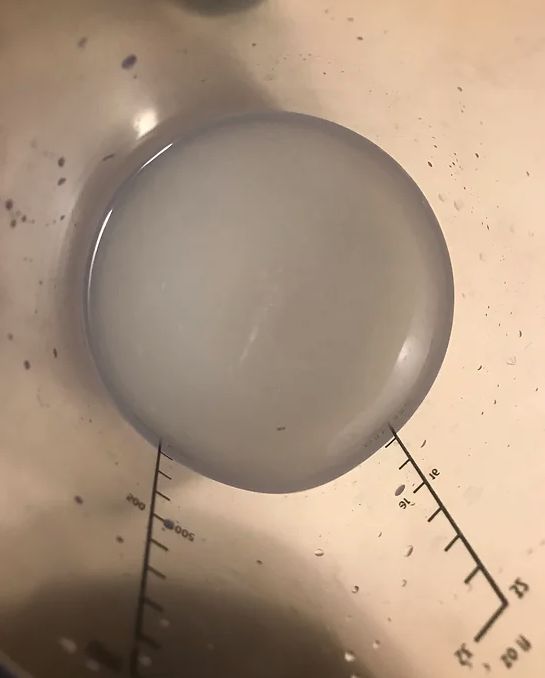
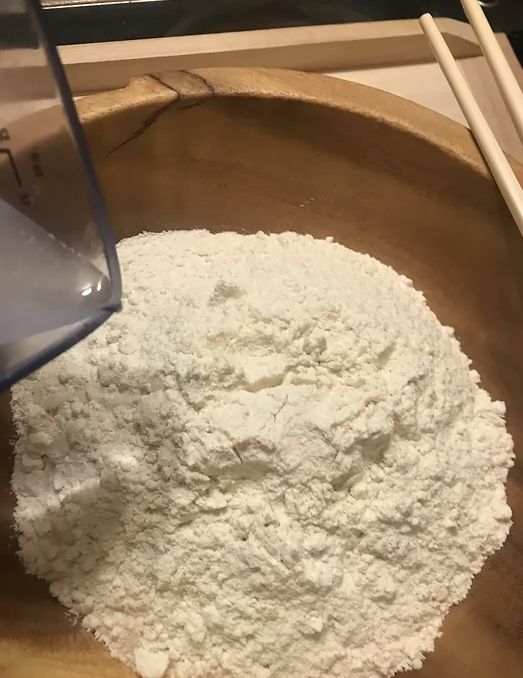
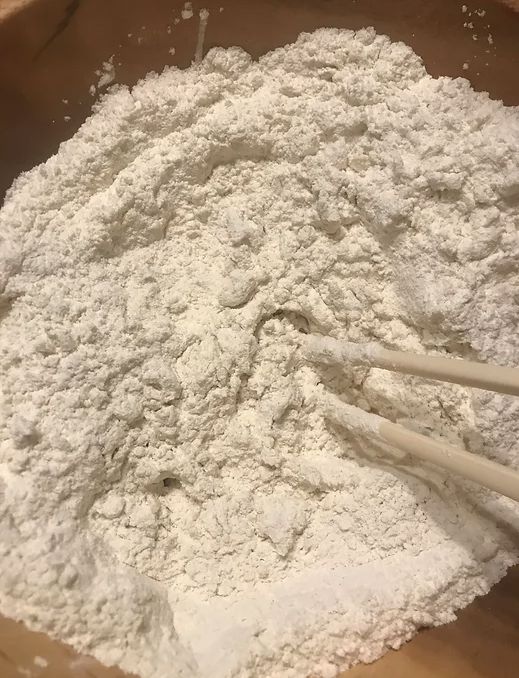
2. Continue to add the water until all is added into the flour. You want to achieve an almost sand like loose dough with no large clumps if possible. When ready place all of the dough tightly into a ziplock bag and allow to rest for 30 minutes at room temperature.
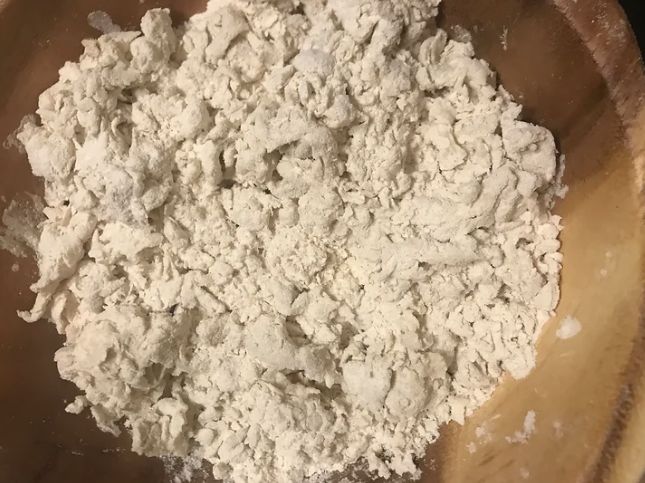
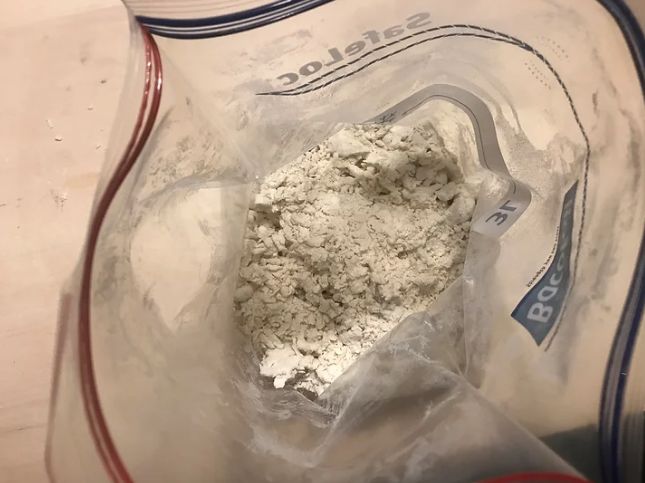
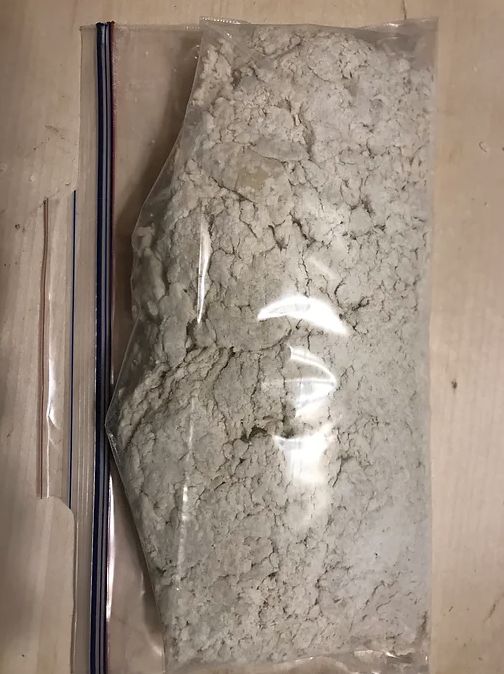
3. After the dough has had time to rest it should be manageable to work with. The dough will be slightly dry but still be able to bring together to form a dough. At this stage start to kneed the dough together to form a flat piece of dough. The best way to kneed the dough is to actually place a bag over the top of the ziplock bag and to use your feet as the dough is incredibly hard to kneed by hand. After 10-15 minutes of kneading the dough should have come together, next place back into the ziplock bag and flatten out. Allow to rest again for 45 minutes at room temperature.
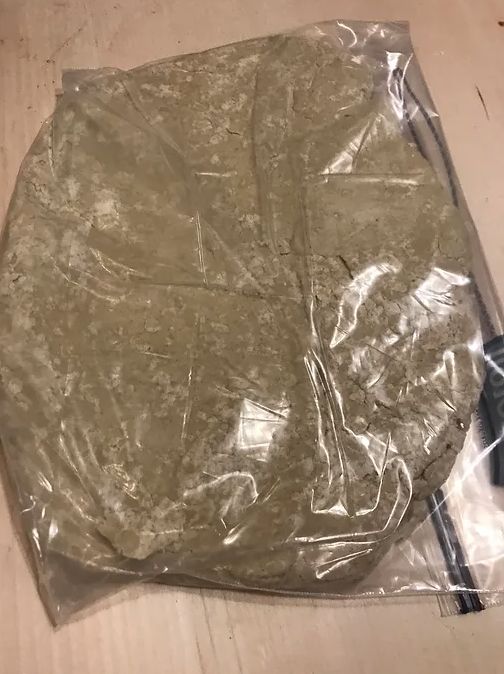
4. Now the dough is ready to roll, remove from the ziplock bag and place onto a work surface dusted with cornflour. Cut the dough into 2- 3 pieces depending on the width of your pasta machine. Roll out the dough with a rolling pin thin enough to fit through the widest setting on you pasta machine. Gradually feed through machine then after the first feed laminate the dough by folding in half lengthways then feeding through the largest setting again. Repeat the laminating method twice to ensure to work the gluten in the flour.
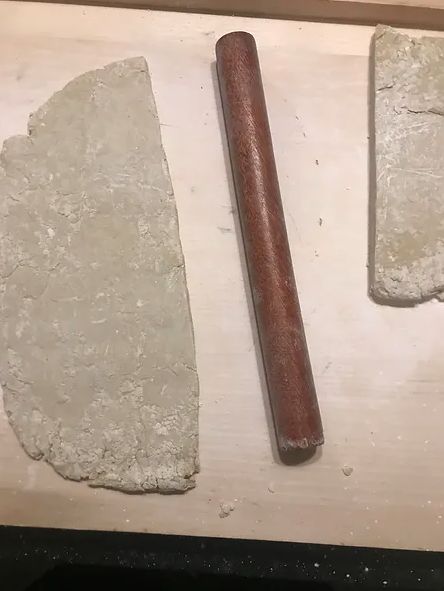
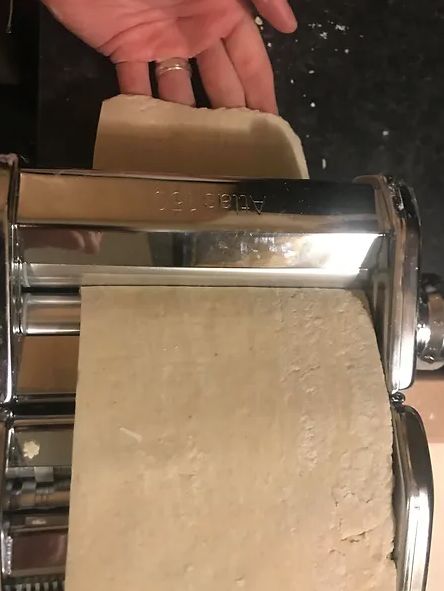
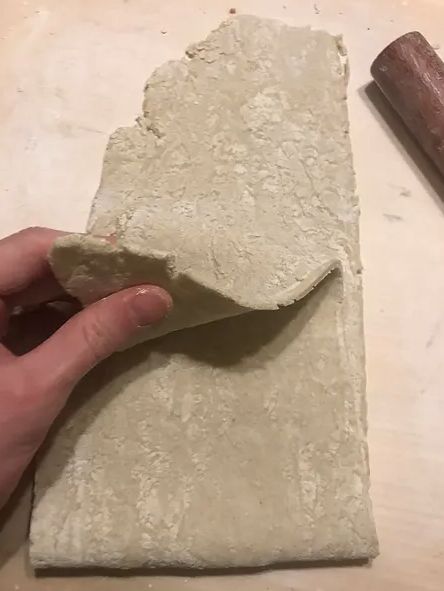
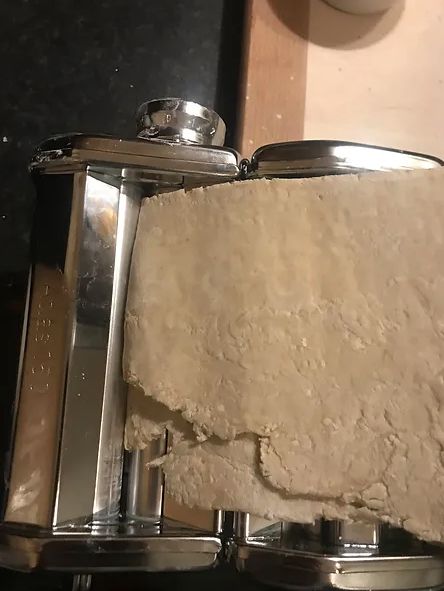
5. After the dough has been laminated continue to feed the dough through the pasta machine working through the numbers to create a long strip of dough. On the atlas machine I went up to number 6 which is 1.2mm in thickness. When The dough is ready cut each strip into half then dust both sides generously with more cornflour. Feed the dough through the cutting attachment to form ramen noodles. Repeat this process with each sheet of dough, then when all of the dough is cut dust a tray with corn flour and place the noodles onto it. Cover the noodles and store in the fridge overnight.
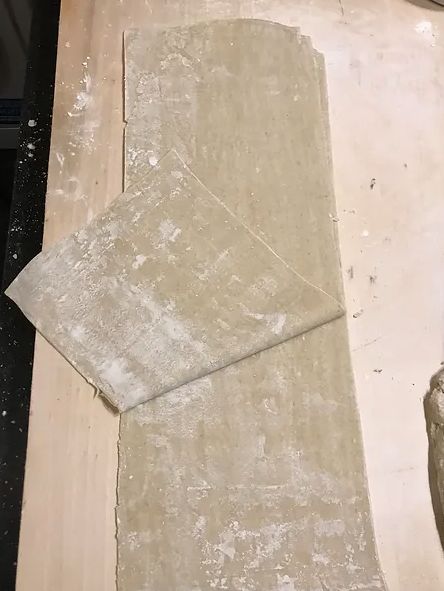
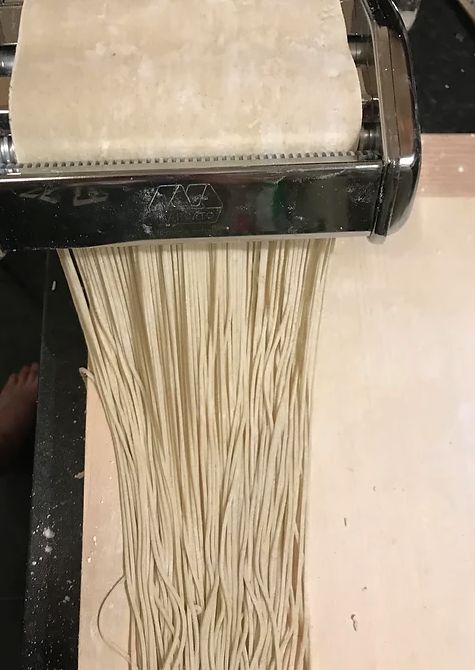
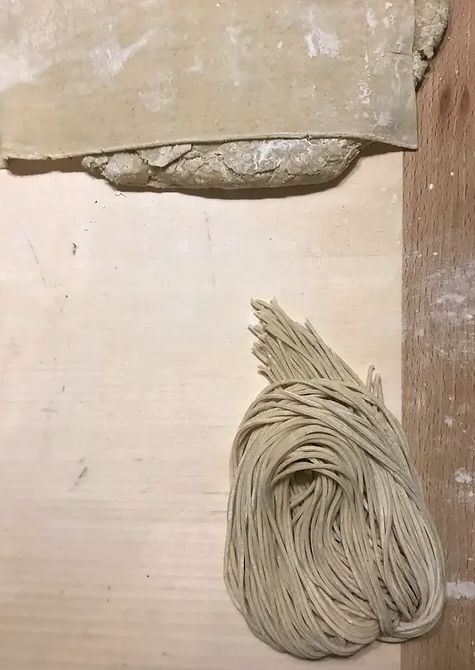
Curry Tonkotsu Broth:
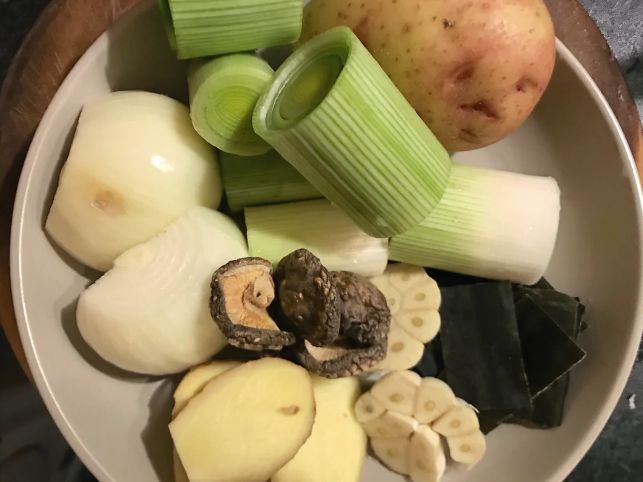
6. Now that the noodles are prepped we can move onto the broth, begin by adding 750g of pork femur bones and 100g of pork rind to a large pan/pot full of water. Bring to the boil and boil for 30-45 minutes to remove the impurities from the bones. Now drain off the bones and clean under cold running water. When clean add the bones and rind to a fresh pan/pot and fill with water. Place onto a high heat then add 1 chopped leek, 1 chopped potato, 1 onion chopped, 1 whole bulb of garlic cut in half, 50g sliced ginger, 20g kombu, 5 shiitake mushrooms and a decent amount of salt. Place a lid on top and let it boil on a high heat for 5-6 hours topping up with water and removing any scum if needed. You could use a pressure cooker here also if you have one to cut the time down. After a few hours of boiling we are looking for the broth to turn almost milky in consistency.
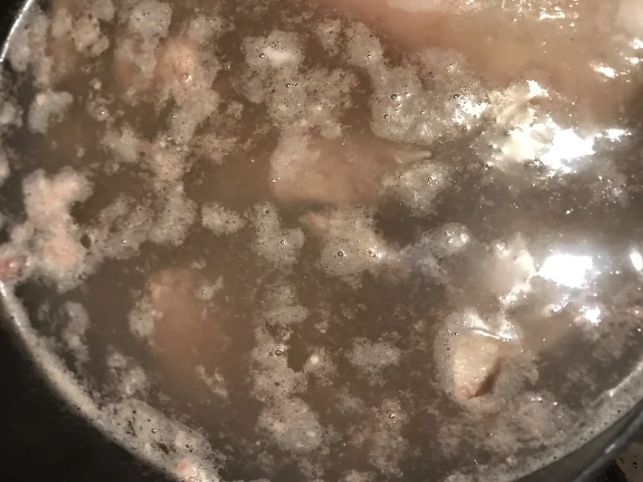
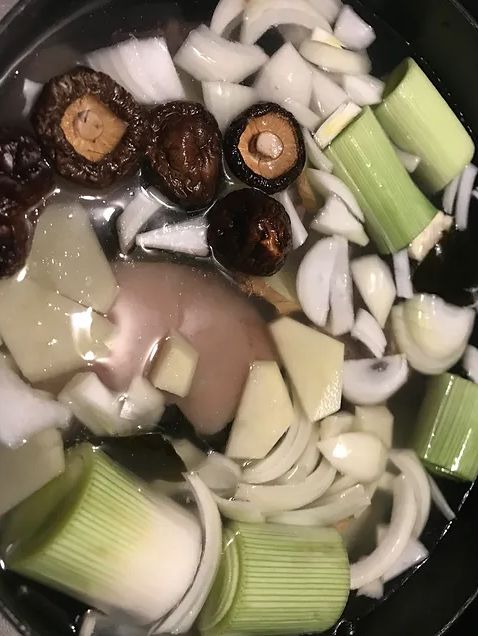
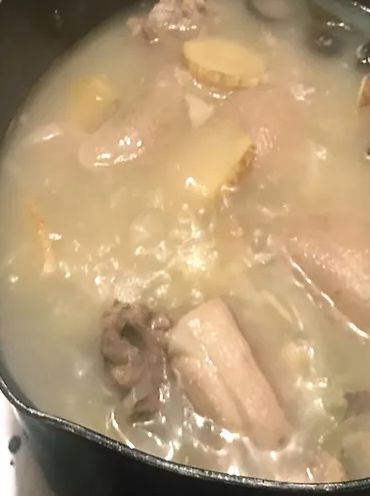
Shoyu Tare:
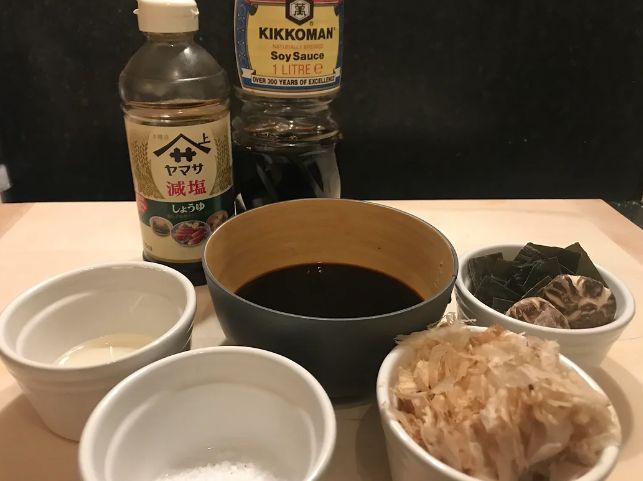
7. Whilst we wait on the broth to cook we can now make the tare. For the shoyu I went with a blend of 2 different types of soy although you can use only kikkoman if you like. Add 250ml of water to a pan then add 10g kombu, 5g bonito flakes and 2 dry shiitake mushrooms. You can do this the night before day 1 if you like, as this will extract more umami. Otherwise place to one side and allow to sit for 15 minutes. Now place onto a medium heat then add 250ml shoyu, 10ml mirin, 3g salt and 4g of white sugar. Simmer the tare until the temperature reaches 80°c, you don’t want to boil the tare as it may become bitter. When the temperature reaches 80°c remove from the heat and allow to sit at room temperature for another 15 minutes. Finaly strain the tare into a bowl and store in the fridge overnight to mature. Tare can be kept in the refrigerator for a few weeks for future ramen.
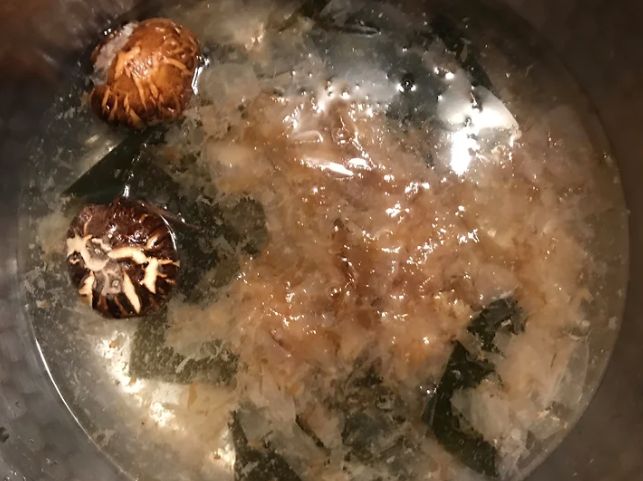
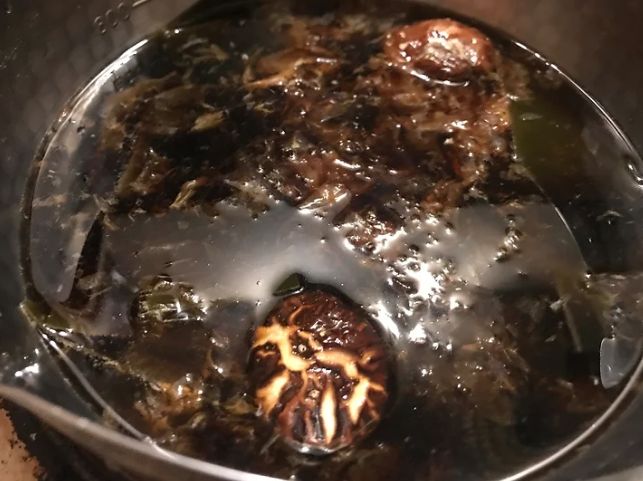
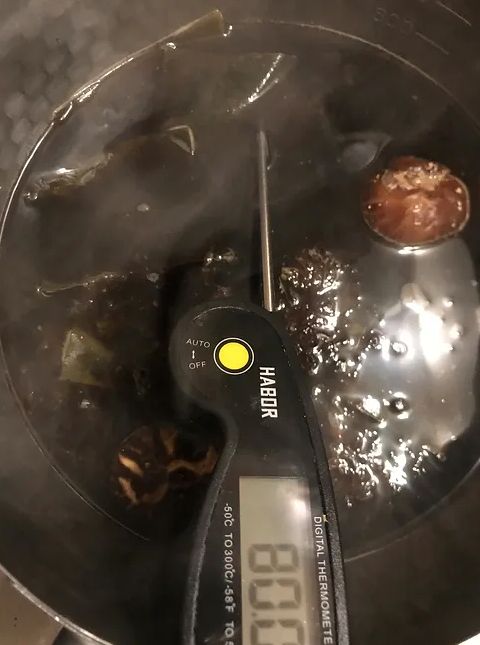
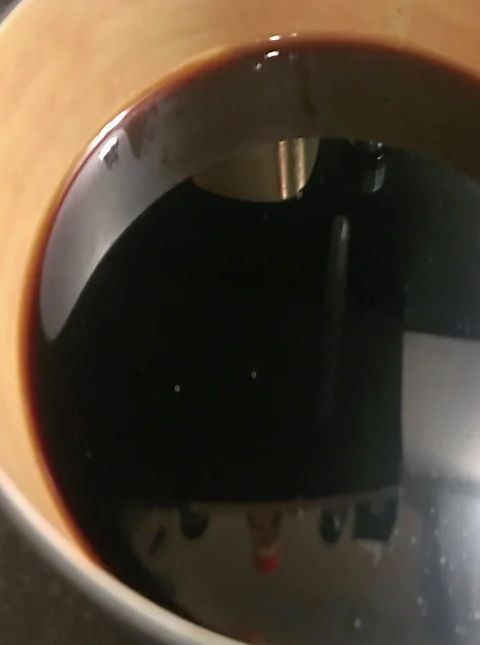
8. Now back to the tonkotsu broth, after a decent 5-6 hours of boiling away the broth should now have become incredibly milky. Now add 2 tbsps of mild curry powder and mix well, or lightly blitz the broth with a hand blender if you have one. Next pass the broth through a fine sieve into a fresh container. Passing the broth does take some time and you want to make sure you extract as much flavour from the bones and aromats as possible. When passed, adjust the seasoning with salt to balance out the broth although not too much as this is the purpose of the tare at the end. Allow the broth to cool then store in the refrigerator over night with the noodles and tare.
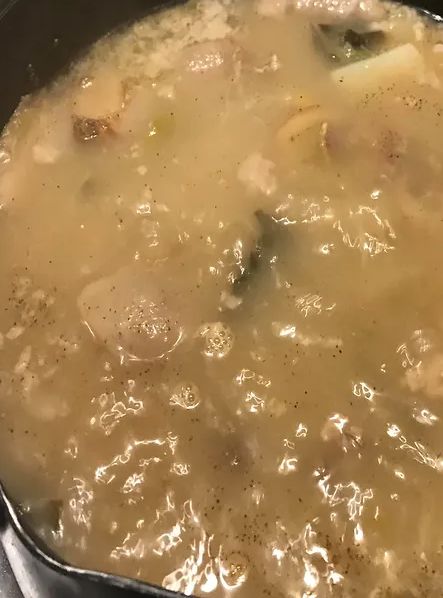
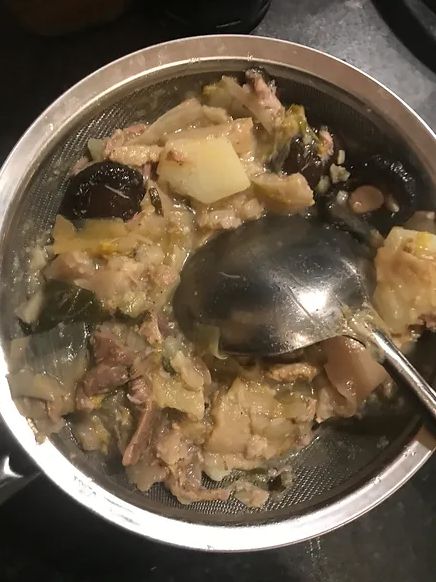
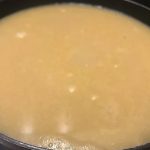
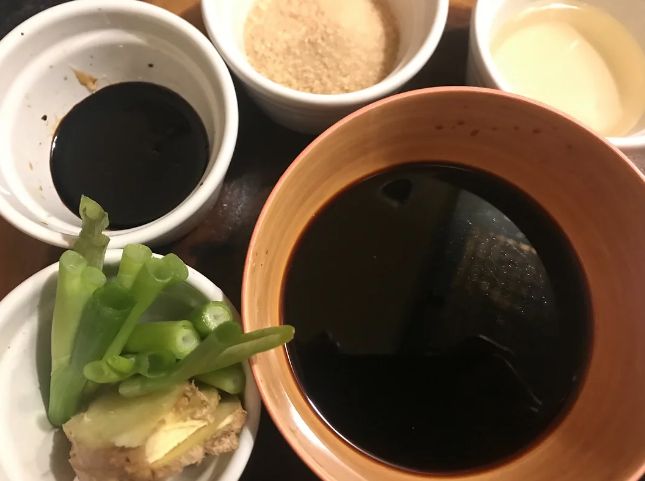
1. Now on to the second part of this recipe, most of the work is done and now all that’s left to do is make the toppings and bring everything together. For the chashu begin by rolling up approx 750g slab of belly pork. When rolled use a long piece of kitchen sting to tie around the pork nice and tightly.
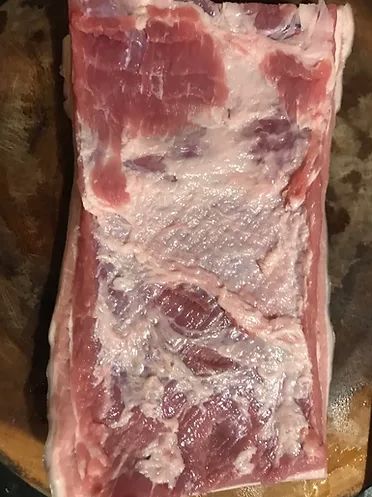
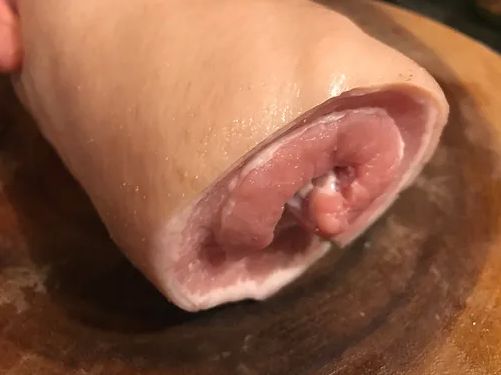
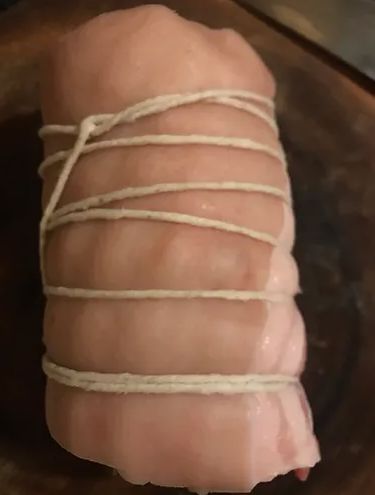
2. Now in a deep pot add 250ml light soy, 50ml dark soy, 250ml water, 70g brown sugar, 50ml mirin, 20g sliced ginger, 4 spring onions and 5 garlic cloves. Place onto a medium to high heat then add the rolled pork belly. Cook the pork belly with a lid on for 1 1/2 – 2 hours on a medium to high heat turning the pork occasionally.
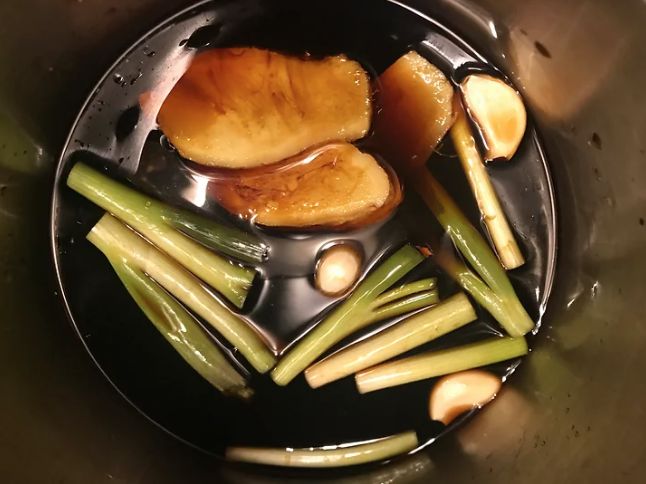
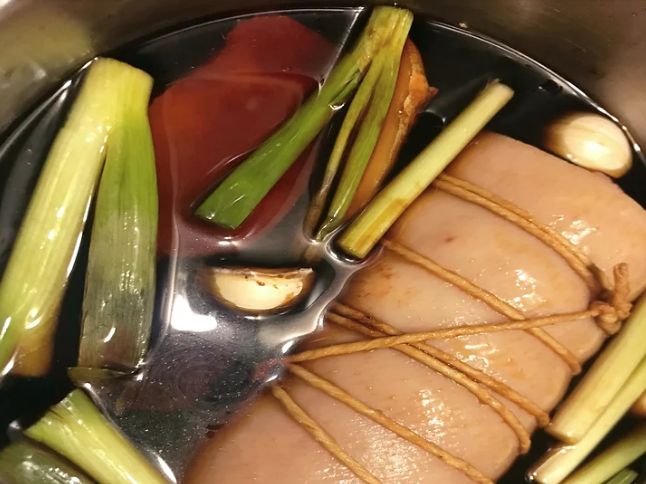
3. After 2 hours the pork should have a slight wobble when you take it out, place onto a tray and store in the refrigerator to cool. The chashu is much easier to slice when cold. As for the soy broth that we cooked the pork in, place into a fresh container and set to one side to also cool. We can use the same broth to make our soy eggs. For the eggs soft boil 4 eggs in a pan of boiling water for 7 minutes. When ready shock the eggs in ice cold water to stop the cooking process then peel and add to the cooled soy broth. Keep the soy eggs in the broth in the refrigerator for at least 1 hour.
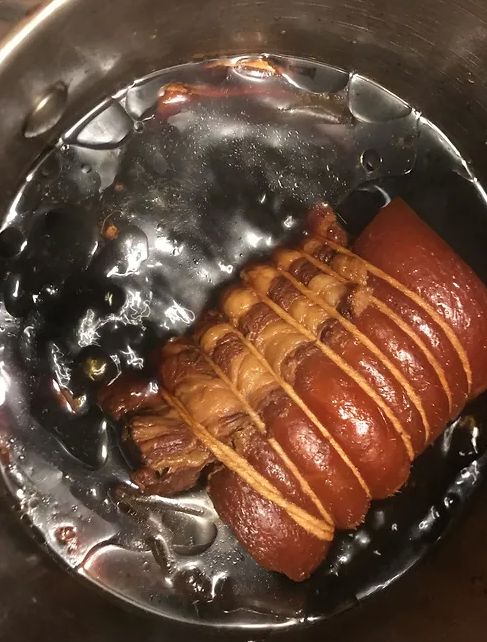
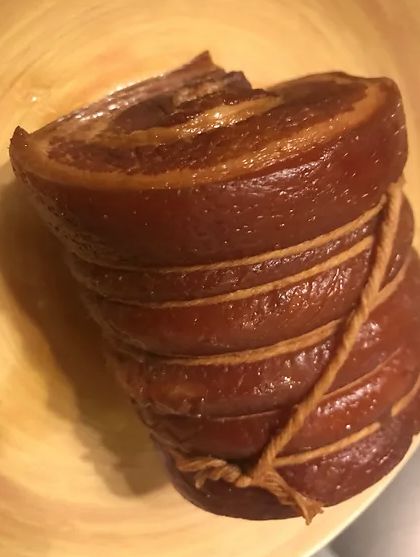
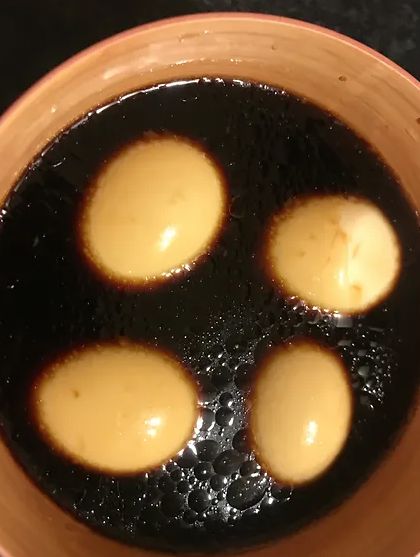
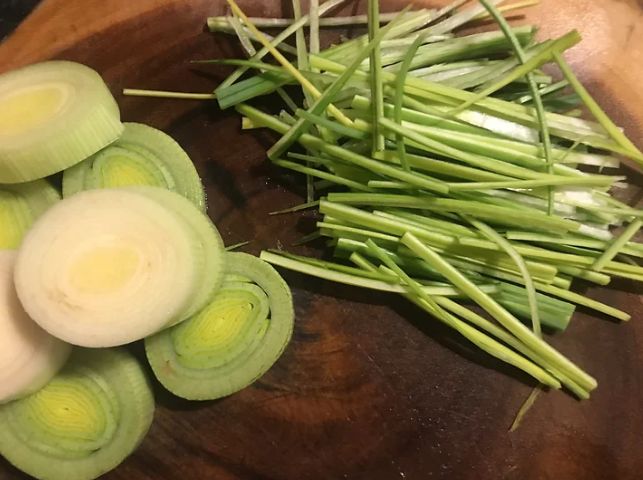
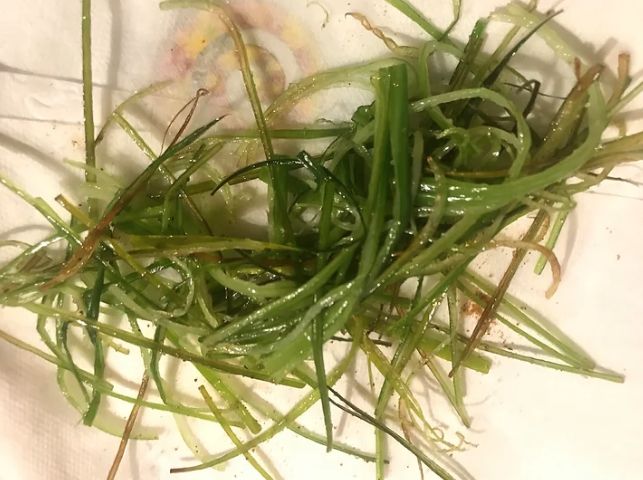
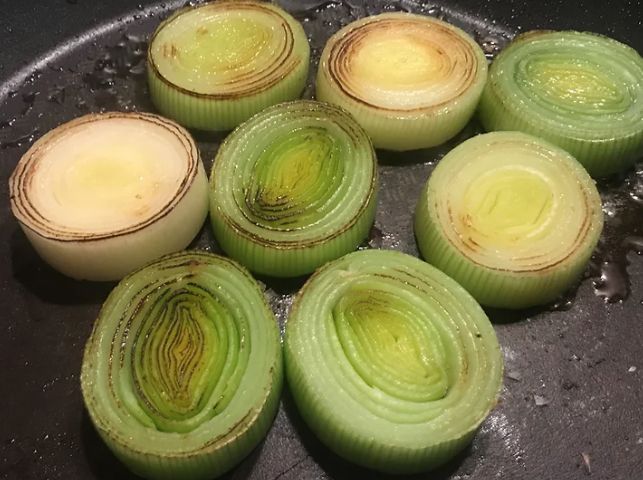
5. To make the curry oil, simply in a pan add 100ml cooking oil, 1 chopped shallot, 4 garlic cloves and 1 tbsp of mild curry powder. Place onto a medium to high heat and fry all ingredients until lightly golden brown. When ready drain of the oil and season with salt. Drizzle a small amount of the curry oil over the seared cooked leek slices and allow to infuse in the oil.
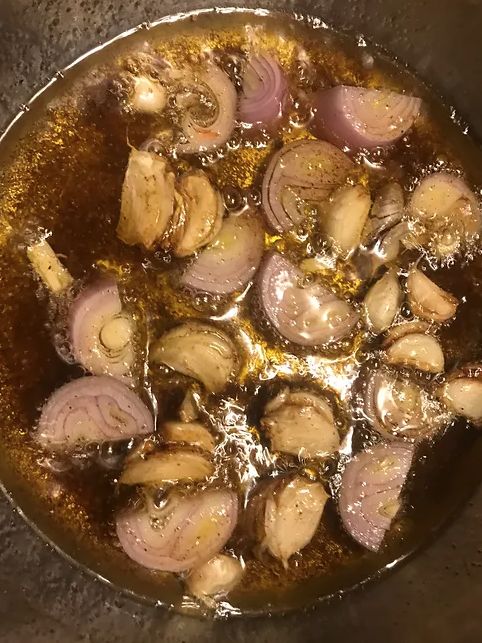
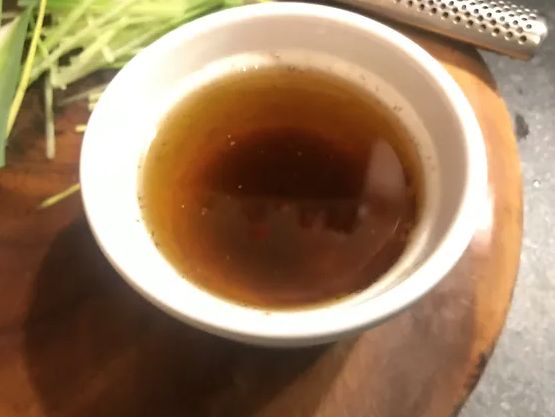
6. Now we can prepare everything to serve, take the tonkotsu broth out of the refrigerator then remove the top layer of fat that lays on top of the broth. Place into a pan on a medium to high heat to heat. For the chashu when cool slice into roughly 1cm slices then heat by placing under a grill or by blowtorching.
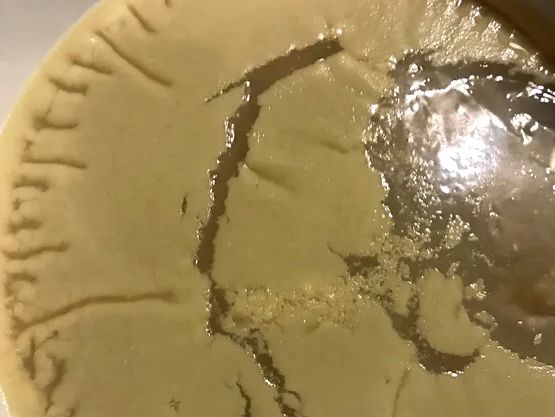
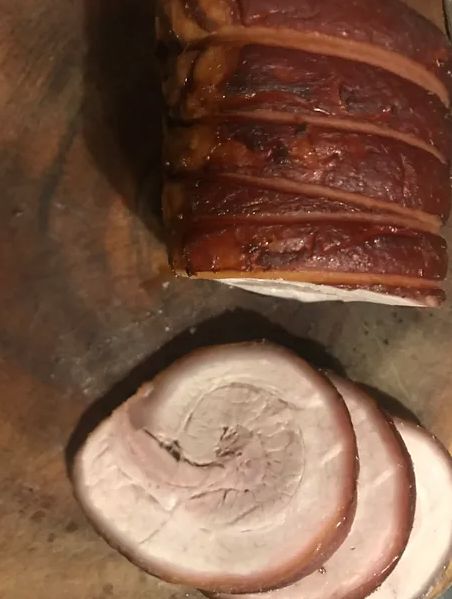
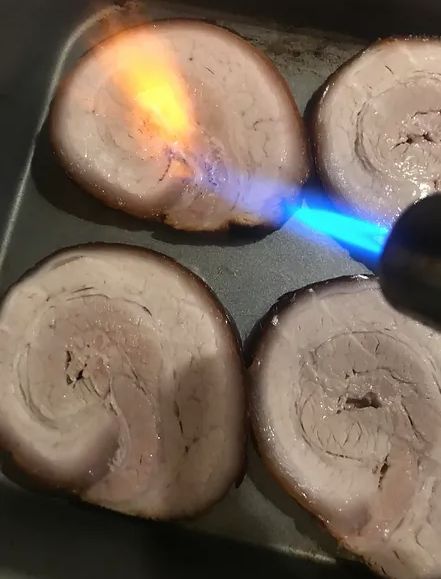
7. When everything is ready to go last thing to do is cook the noodles, just before we cook prepare the tare, sliced pork, leeks and soy eggs ready to serve. The noodles cut in this way will literally take no longer than a minute to cook. Place a large pan of water onto a high heat and bring to a boil. When boiling add the noodles in batches checking to see if cooked at the 45 sec mark to be safe. You want the noodles to maintain a slight bite. When cooked drain off the noodles well.
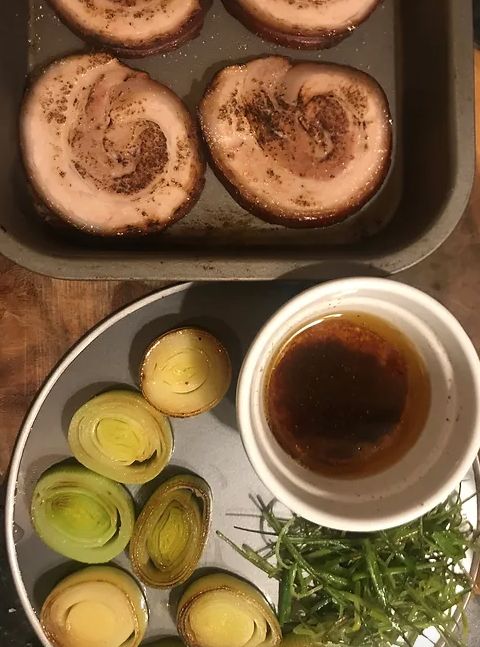
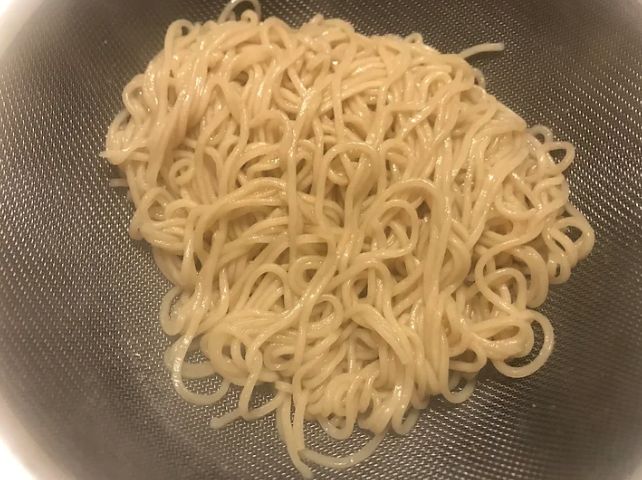
8. Finally we can serve, firstly add a small ladle of the tare then a drizzle of the chilli oil to the serving bowls. Next place in 2 large ladles of the hot tonkotsu broth. Lay the cooked noodles in the broth then place 2 slices of chashu, some of the sliced leeks and a soy egg on top. Finish the ramen with some crispy leeks and another small drizzle of the curry oil and take a deep breath! Hope you like this amazing ramen recipe!!!
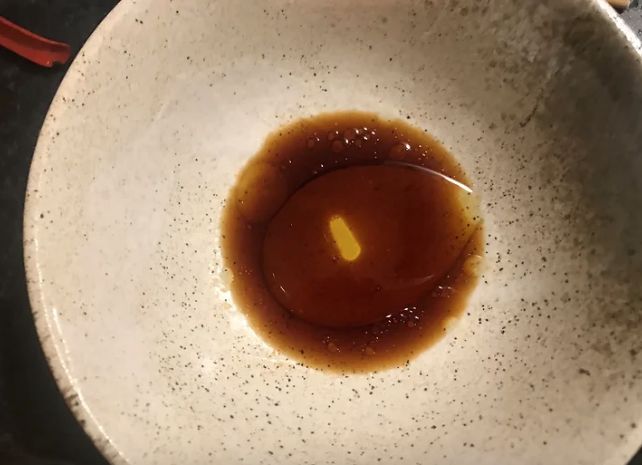
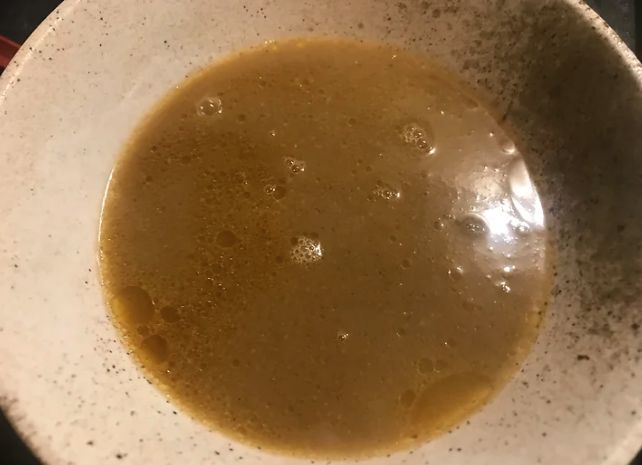
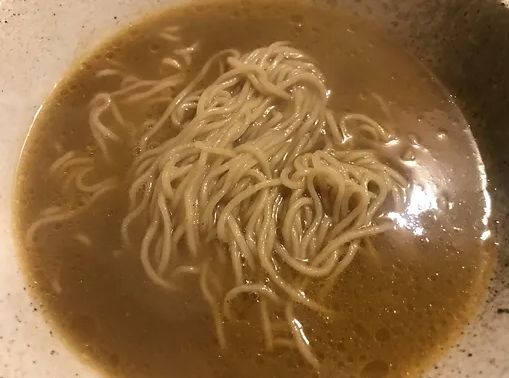
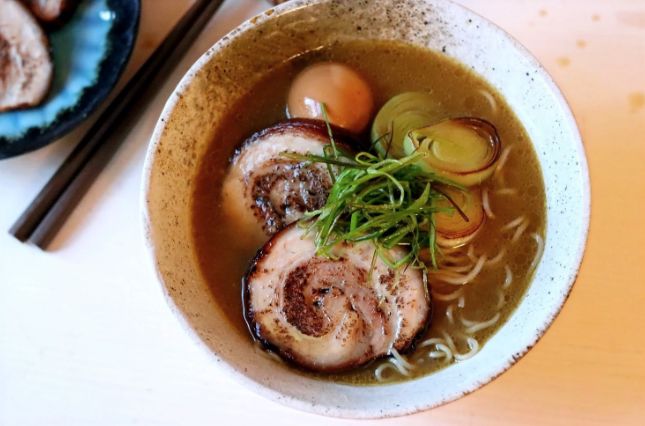
Additional notes
To cut the timing down on this recipe you can use a pressure cooker for the broth, or simply buy dry ramen noodles. I always recommend making your own ramen noodles as when you try them you will see where I’m coming from. Instead of belly pork chashu you could alternatively try rolling chicken thighs and cook the same way. Ramen to me always takes time to do properly and the whole experience of making everything and attention to detail is what makes ramen so special. Good luck on a ramen adventure and have fun!

